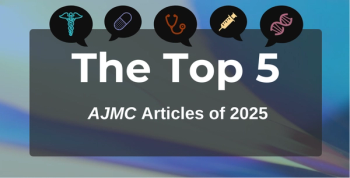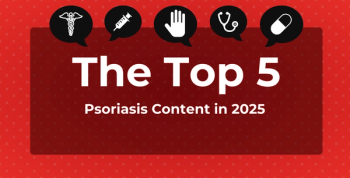
Patients With NAFLD Have Higher Risk of HF, Study Finds
Specifically, patients with nonalcoholic fatty liver disease (NAFLD) have a higher risk of developing heart failure (HF) with preserved ejection fraction, according to new research.
Patients with
Results showed further found that there was a higher risk of developing HF with preserved ejection fraction (HFpEF) versus HF with reduced ejection fraction (HFrEF).
Both NAFLD and HF are increasing in prevalence. NAFLD incidence has risen 5‐fold over the past 2 decades in the United States and while it is typically silent and underdiagnosed, it is assumed to affect 10% to 30% of the population. Studies have suggested the NAFLD is a risk factor for cardiovascular disease, which is also the leading cause of death.
The study was conducted because while a link between NAFLD and HFpEF has been proposed due to shared disease characteristics, researchers sough additional epidemiological evidence about the independent association between NAFLD and the risk of HF as well the risk of the 2 specific subtypes of HF.
Data for the retrospective, cohort study came from a subset of the national 5% sample of all fee‐for‐service Medicare beneficiaries with no prior diagnosis of HF and included both inpatient and outpatient visits. Follow-up occurred between October 2015 to December 2016.
Researchers used International Classification of Diseases, Tenth Revision (ICD‐10) codes for HFpEF and HFrEF. Beneficiaries with prevalent HF were identified by presence of any HF claims over a 2‐year look‐back period from October 2015 and excluded from the present analysis.
Among 870,535 Medicare patients, 3.2% (N = 27,919) had a clinical diagnosis of NAFLD; these patients were more likely to be women, were less commonly Black patients, and had additional comorbidities, such as diabetes, obesity, and kidney disease.
Compared with patients without NAFLD, follow‐up showed that patients with baseline NAFLD had a significantly higher risk of new‐onset HF in unadjusted (6.4% versus 5.0%; P <.001) and adjusted hazard ratio [aHR] 1.23; 95% CI, 1.18–1.29) analyses.
Among HF subtypes, the association of NAFLD with later risk of HF was stronger for HFpEF (aHR, 1.24; 95% CI, 1.14–1.34) compared with HFrEF (aHR, 1.09; 95% CI, 0.98–1.2).
“The persistence of an increased risk after adjustment for clinical and demographic factors suggests an epidemiological link between NAFLD and HF beyond the basis of shared risk factors that requires further investigation,” the authors concluded.
Reference
Fudim M, Zhong L, Patel KV, et al. Nonalcoholic fatty liver disease and risk of heart failure among Medicare beneficiaries. J Am Heart Assoc. Published online November 10, 2021. 10:e021654
Newsletter
Stay ahead of policy, cost, and value—subscribe to AJMC for expert insights at the intersection of clinical care and health economics.








































